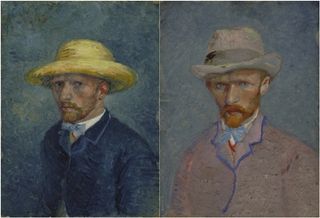Van Gogh Self-Portrait Actually of His Brother

Art historians believed that Vincent van Gogh had never painted a portrait of his close companion and brother Theo, but it turns out the two looked so similar the portrait was in the possession of the Vincent van Gogh museum all this time.
The painting is from the artist's years in Antwerp and Paris, from 1885-1888, a time period in his life that isn't well studied. More than 90 paintings from this time were analyzed and interpreted for a new book by Van Gogh Museum employees Ella Hendriks and Louis van Tilborgh, "Vincent van Gogh, Paintings 2" (Waanders Publishers, 2011).
Of the van Gogh paintings from that time period, many are thought to be self-portraits. Upon closer inspection, the researchers realized that one painting from 1887 looked a little different from the rest. Its subject had rounder ears, a lighter beard and shaved cheeks.
The image, they believe, is of Theo, van Gogh's close companion and staunchest ally. The brothers were so close, in fact, that much of what we know about van Gogh comes from his letters to Theo. During this time period the brothers were living together, meaning the letters to Theo stopped.
The researchers also made a number of other findings in their study of van Gogh's work from this period. During these years his style changed drastically, from sombre to more modern. He used new, bright, vivid colors that have faded with time.
They also discovered a few of the paintings were misdated. An image of a worn laborer's shoes was actually painted over a cityscape of Paris, suggesting it was painted much later than previously believed. Some of the subjects of these paintings were off, too: The park in "The garden with lovers" was actually in Montmartre, not in Asnières, and the bird in "Wheatfield with a lark" is actually a partridge.
You can follow LiveScience staff writer Jennifer Welsh on Twitter @microbelover. Follow LiveScience for the latest in science news and discoveries on Twitter @livescience and on Facebook.
Sign up for the Live Science daily newsletter now
Get the world’s most fascinating discoveries delivered straight to your inbox.
Jennifer Welsh is a Connecticut-based science writer and editor and a regular contributor to Live Science. She also has several years of bench work in cancer research and anti-viral drug discovery under her belt. She has previously written for Science News, VerywellHealth, The Scientist, Discover Magazine, WIRED Science, and Business Insider.

